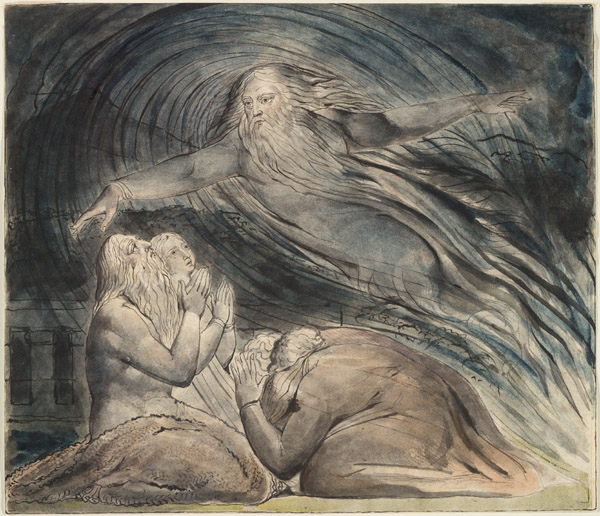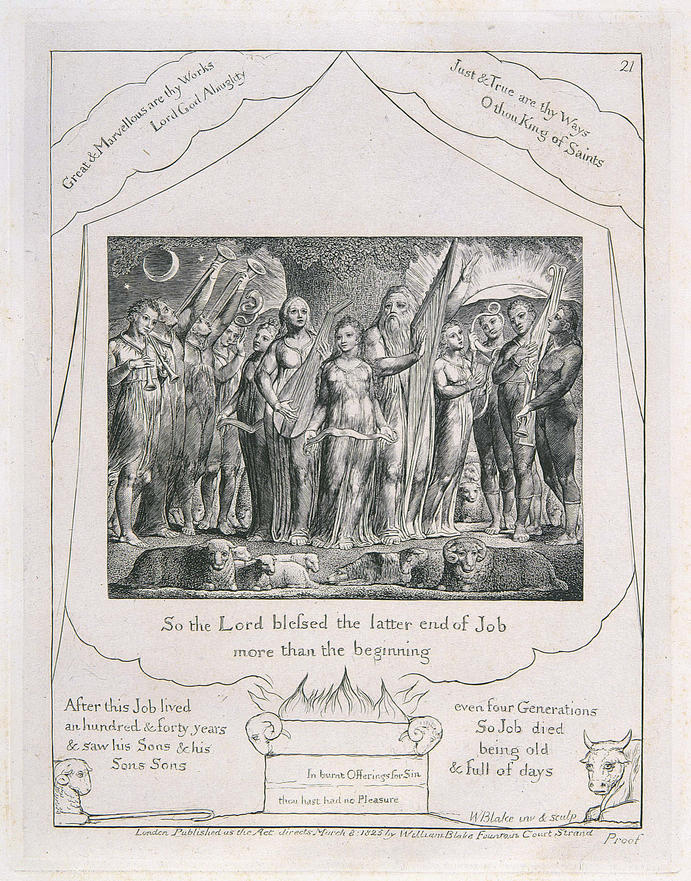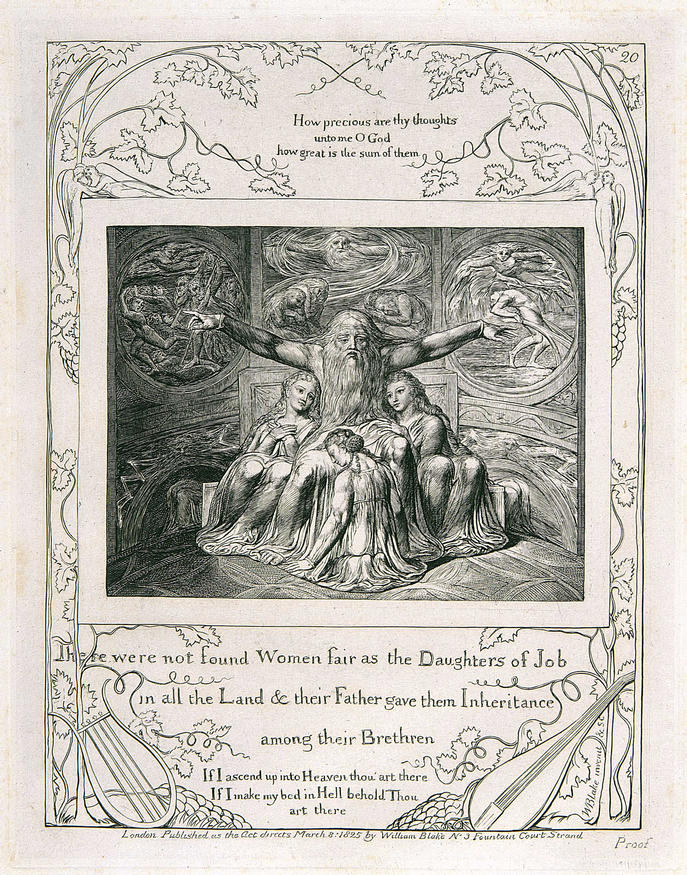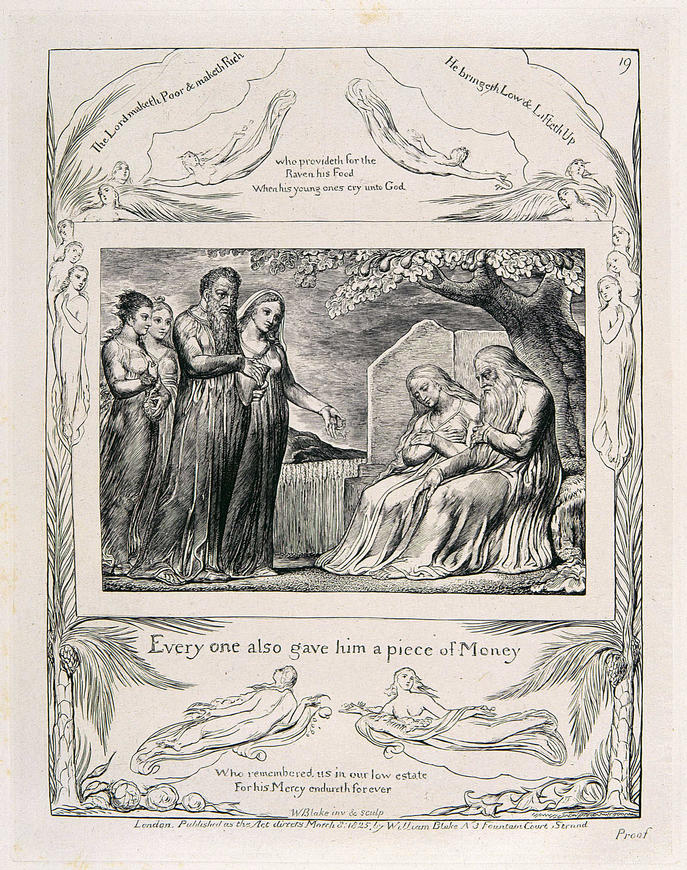 |
Blake Archive Marriage of Heaven and Hell Plate 5 |
Erdman, in
The Illuminated Blakesays: "Phaeton-like, down hurdle a naked man and sword and a horse with saddle cloth and broken chariot wheel...The man's spread hands are braced to hit the ground, but it is already in flames. Reason must have forgotten to let the horse do the pulling; a sword is not a bridle. But Energy must have restraint. Between them they have let the sun fall, connoting universal ruin."
The
Marriage of Heaven and Hell was written in 1791 when Blake was a young man; he might be called an angry young man.
Marriage of Heaven and Hell, Plate 5, (E 34)"Those who restrain desire, do so because theirs
is weak enough to be restrained; and the restrainer or
reason usurps its place & governs the unwilling.
And being restraind it by degrees becomes passive
till it is only the shadow of desire.
The history of this is written in Paradise Lost. & the
Governor or Reason is call'd Messiah.
And the original Archangel or possessor of the com-
mand of the heavenly host, is calld the Devil or Satan
and his children are call'd Sin & Death
But in the Book of Job Miltons Messiah is call'd
Satan. For this history has been adopted by both parties
It indeed appear'd to Reason as if Desire was
cast out. but the Devils account is, that the Messiah
fell. & formed a heaven of what he stole from the Abyss
This is shewn in the Gospel, where he prays to the
Father to send the comforter or Desire that Reason
may have Ideas to build on, the Jehovah of the Bible
being no other than he, who dwells in flaming fire.
Know that after Christs death, he became Jehovah.
But in Milton; the Father is Destiny, the Son, a
Ratio of the five senses. & the Holy-ghost, Vacuum!
Note. The reason Milton wrote in fetters when
he wrote of Angels & God, and at liberty when of
Devils & Hell, is because he was a true Poet and
of the Devils party without knowing it"
Blake was continually striving to free his imagination from constraints. The internal constraints of which he was most aware (excluding the selfhood) were misguided reason and emotion. In Plate 5 of
Marriage of Heaven and Hell he expresses the concern that reason will succeed in restraining the emotions to the point that the imagination is bound. Emotion or desire is the source of energy which is required for the creative process.
As a poet, Blake identifies with Milton whose
Paradise Lost was of consuming interest to Blake. In this Plate Blake deals with the poet's work (his own and Milton's), Biblical characters who becomes fictional characters for both the poets, and the abstract ideas of reason and emotion.
Blake became so interested in correcting the misconceptions of his friend (his spiritual, intellectual but not corporeal friend), that he addressed the issue in his poem
Milton. Since Milton died 83 years before Blake was born, this was a friendship on the level of Eternity; time was not of the essence.
The crux of Milton's error in Blake's system is stated concisely as:
"But in Milton; the Father is Destiny, the Son, a Ratio of the
five senses. & the Holy-ghost, Vacuum!"
In Blake the Father is the Divine Humanity, in whose Image man is created; the Son is the Divine Vision, God in Man, the Incarnation; and the Holy Spirit is the Divine Body, the Human Imagination, the activity of expressing the Divine.
Or in other terms for Blake:
Father = Urizen = reason
Son = Luvah = emotions
Holy Spirit = Los = intuition or imagination
Unified man = Tharmas = body




.png)






